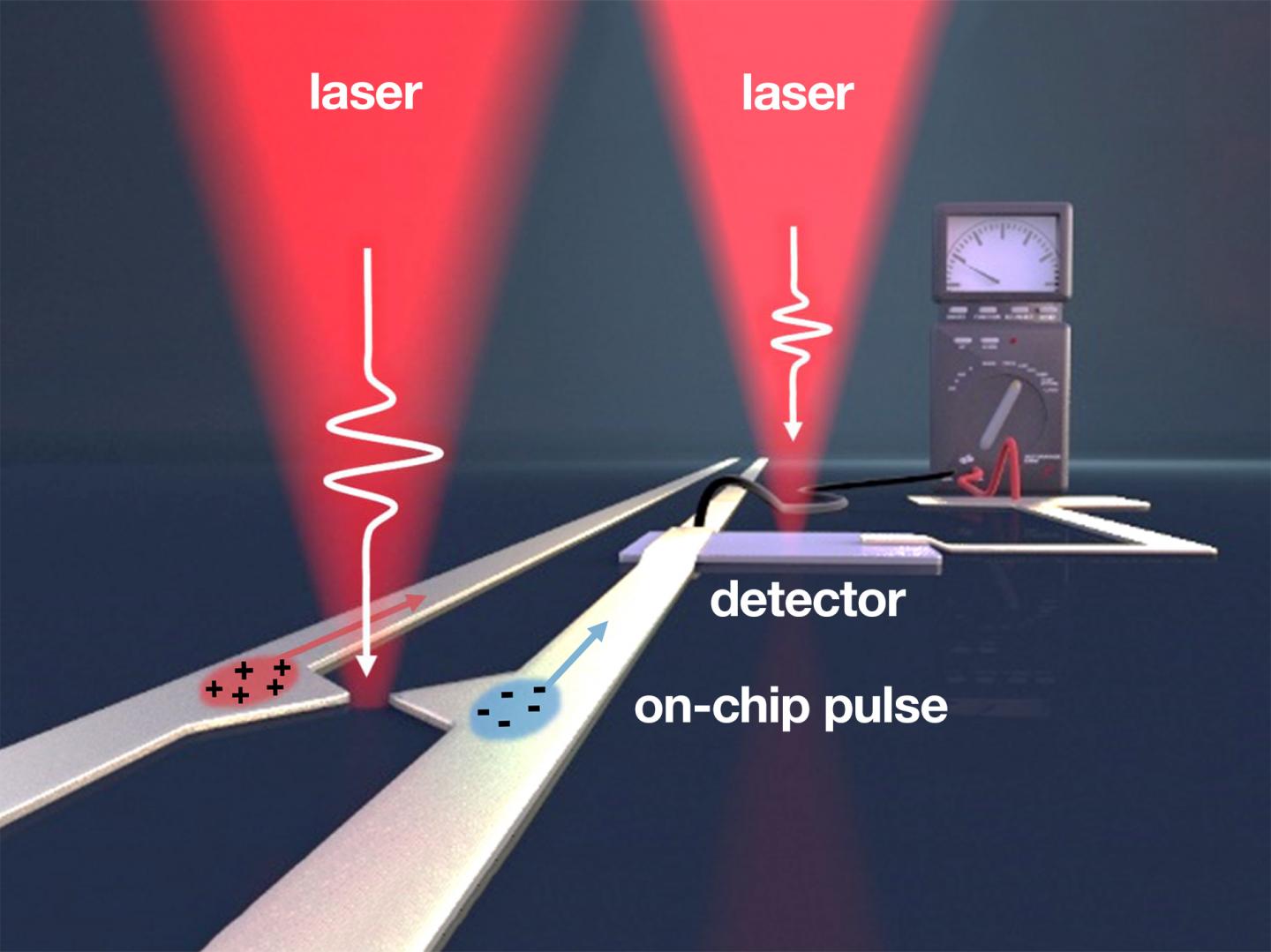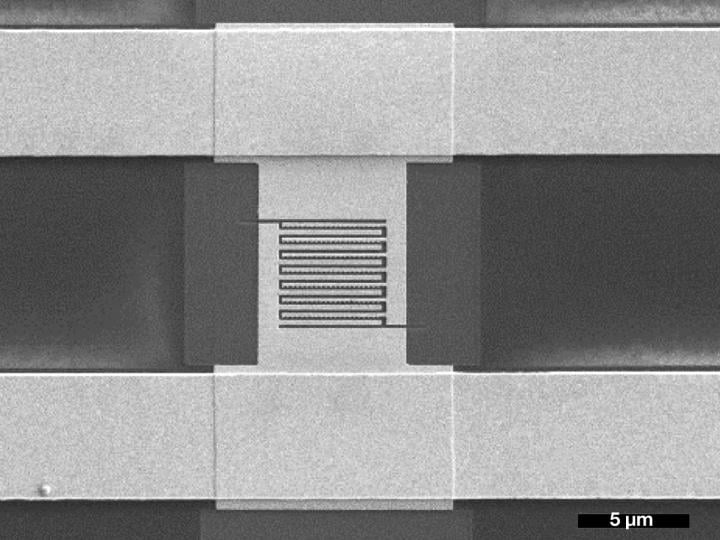Physicists from the Technical University of Munich (TUM) exploited femotsecond photoswitches based on the nanoscale metal structures to drive the pulses. The nonlinear ultrafast response was based on a plasmonically enhanced, multiphoton absorption, resulting in a field emission of ballistic hot electrons propagating across the nanoscale structures.
 A team headed by physicists Alexander Holleitner and Reinhard Kienberger from the Technical University of Munich (TUM) has generated ultrashort electric pulses on a chip using metal antennas only a few nanometers in size. Pulses of femtosecond length from the pump laser (left) generate on-chip electric pulses in the terahertz frequency range. With the laser on the right, the information is read out again. Courtesy of Christoph Hohmann/NIM, A. Holleitner/TUM.
One side of the nanometer-size metal structures was more pointed than the other, giving the metal structures (antennas) an asymmetrical shape.
A team headed by physicists Alexander Holleitner and Reinhard Kienberger from the Technical University of Munich (TUM) has generated ultrashort electric pulses on a chip using metal antennas only a few nanometers in size. Pulses of femtosecond length from the pump laser (left) generate on-chip electric pulses in the terahertz frequency range. With the laser on the right, the information is read out again. Courtesy of Christoph Hohmann/NIM, A. Holleitner/TUM.
One side of the nanometer-size metal structures was more pointed than the other, giving the metal structures (antennas) an asymmetrical shape.
When a lens-focused laser pulse excited the antennas, they emitted more electrons on the side that was more pointed.
An electric current flowed between the contacts as long as the antennas were excited. The light pulses lasted only a few femtoseconds, and the electrical pulses in the antennas were correspondingly short. Researchers said that all the lighting effects were stronger on the pointed side, including the photoemission that was used to generate the current.
According to researchers, a femtosecond laser pulse with a frequency of 200 THz could generate an ultrashort terahertz signal with a frequency of up to 10 THz in the circuits on the chip.
Researchers used sapphire as the chip material because sapphire cannot be stimulated optically and would therefore cause no interference. Lasers with a 1.5-μ wavelength were used in traditional internet fiber optic cables.
 An electron-microscopic image of the chip with asymmetric plasmonic antennas made from gold on sapphire. Courtesy of A. Holleitner/TUM.
Researchers further discovered that the electrical and THz pulses both were nonlinearly dependent on the excitation power of the laser used, indicating that the photoemission in the antennas could be triggered by the absorption of multiple photons per light pulse.
An electron-microscopic image of the chip with asymmetric plasmonic antennas made from gold on sapphire. Courtesy of A. Holleitner/TUM.
Researchers further discovered that the electrical and THz pulses both were nonlinearly dependent on the excitation power of the laser used, indicating that the photoemission in the antennas could be triggered by the absorption of multiple photons per light pulse.
“Such fast, nonlinear on-chip pulses did not exist hitherto,” said professor Alexander Holleitner.
The team believes that these results could pave the way toward femtosecond electronics integrated in wafer-scale terahertz circuits. By further exploring the nonlinearity effect, the team hopes to discover even faster tunnel emission effects in the antennas for possible use in on-chip applications.
The research was published in Nature Communications (doi:10.1038/s41467-018-04666-y).

